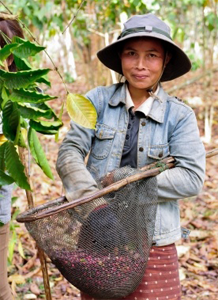Climate refers to the weather conditions of a particular place for a period of time spanning a minimum of ten (10) years whilst disaster resilience is the ability of societies to seamlessly readjust in the circumstances of being stricken by any form of disaster.
Due to the changes that are being observed and recorded in the climate and its adverse effects on the people as well as other living things within the world, the UNDP has instituted some preventive and adaptive measures to help societies cope in a better way with the various effects associated with such changes in the climatic conditions of a society. Climate and disaster resilience has been a noble course chartered by the UNDP with assistance from the various governments to ensure that each and every society within member countries are well prepared for any environmental emergencies that may hit out of the blue.
The effects of some of these environmental disasters are so profound that without help from such an organisation it will be almost impossible for some the hard hit countries to recover. This is mostly the case with developing countries.
Disaster Risk: It has been realised that for developing countries to recover fully from environmental disasters like volcanic eruptions, landslides, floods and hurricanes, is something next to impossible. This has led to UNDP forming alliances with the governmental institutions of member countries in helping such countries to help its citizens so as to ensure that they will be well equipped with the much needed knowledge, skills and equipments needed to reduce the effects of such environmental disasters. The UNDP has helped member countries in prioritising the need for Disaster Risk Reduction (DRR) by putting measures in place to help in the prevention of such instances and also in the case of them occurring the necessary steps be followed to keep its effect under control so as to ensure that the country recovers fully from such an environmental disaster. This has been an area of that the UNDP has invested over $200 million from the year 2005 up to date.
Climate Change: Changing climatic conditions is one main obstacle that has for some time now been working against the attainment of sustainable development as the adverse effects associated with such conditions are so severe that they tend to disrupt the entire living conditions of the people living within a particular area. This is why the UNDP has partnered government institutions of member countries to help reduce the effect of such changing climatic conditions. Through the putting in place of policies that check and control the releasing of harmful gases into the atmosphere, energy efficiency measures and other environmentally friendly policies, the UNDP in collaboration with the governments of various member countries seeks to help bring down the effects of climate change by ensuring that the citizens within a particular country become educated on all activities of activities that lead to the changing climatic conditions. This has seen the UNDP working with over a hundred and forty member countries in resorting to environmentally friendly ways of living.
Resilient recovery: The ability of the lesser developed countries to recover completely from natural disasters is something that presents huge obstacles for such countries as they find it very difficult to achieve such a feat all by themselves. In situations where such countries have decided to do it all by themselves, they have ended up rather aggravating the whole problem as they do not see to it that better foundations are laid in the aftermath of such disasters so as to prevent them from occurring again. This is what prompted the UNDP to join hands with organisations such as the European Union and the World Bank to find better ways of assessing disasters and how to efficiently and effectively manage such environmental disasters. The terms used for such activities are referred to as Post-Disaster Needs Assessment (PDNA) and Disaster Recovery Framework (DRF). The UNDP has been working with these organisations for well over six (6) years now in helping to ensure that countries recovering from natural disasters do not only deal with the present damages but also put in place measures that will help prevent such disasters from recurring in the future.
Sustainable Energy: This is one way through which the UNDP has for some years now been helping member countries reach their developmental goals. The UNDP has realised that through the use of sustainable energy, less developed countries will be able to cut down cost on unnecessary spending on power generation and usage which directly leads to surplus in wealth that can be used for other developmental projects. Using unclean sources of energy do not only cause a drain on the financial status of the country, it also causes a lot of health related problems for the citizens by making the environment very unsafe for sustaining living things. This is why the UNDP has for well over 20 years now been helping member countries adopt sustainable ways of generating and utilising energy which goes a long way in ensuring that poverty and health related environmental issues are eradicated completely so as to sustain human lives and that of other living organisms of this generation and the generations that will come later.

